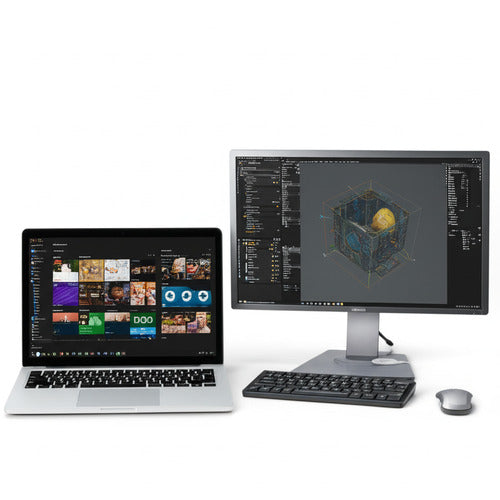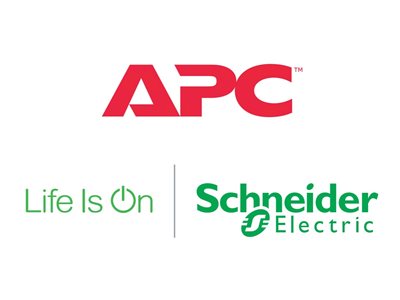Laptop vs. Desktop: Which is the Champion for Your Office Setup?
It's a classic showdown in the world of office technology: the sleek, portable laptop versus the powerful, stationary desktop. For businesses setting up new offices, upgrading existing ones, or even equipping remote teams, deciding between these two can be a critical choice. Both have evolved dramatically, blurring the lines in terms of performance, but their core strengths and weaknesses remain distinct.
So, which is better for your office setup? Let's break down the pros and cons to help you decide.
The Desktop: The Undisputed King of Power and Value
For years, the desktop computer was the default for office work, and for good reason.
-
Pros:
- Raw Performance: Generally, for the same price, a desktop will offer more processing power, RAM, and storage than a laptop. This makes them ideal for demanding tasks like video editing, complex simulations, large data analysis, or running multiple applications simultaneously without slowdown.
- Better Value: You typically get more bang for your buck with a desktop. Components are less miniaturized and easier to manufacture, leading to lower costs for comparable power.
- Ergonomics: Desktops are designed for a fixed workstation setup, allowing for dedicated large monitors, comfortable keyboards, and ergonomic mice, which can significantly improve user comfort and reduce strain over long workdays.
- Easier Upgrades and Repairs: Desktop components are modular, making upgrades (like adding more RAM or a larger hard drive) and repairs simpler and often less expensive.
- Better Cooling: Larger chassis allow for more effective cooling systems, leading to better sustained performance during heavy workloads and potentially a longer lifespan for components.
-
Cons:
- Lack of Portability: This is the most obvious drawback. A desktop is tied to its location, making it unsuitable for employees who need to work from multiple sites, travel frequently, or work from home without a dedicated secondary machine.
- Requires Peripherals: You need to purchase a monitor, keyboard, and mouse separately, adding to the initial cost and setup complexity.
The Laptop: The Master of Mobility and Flexibility
The rise of remote work, flexible office spaces, and the need for employees to be productive anywhere has propelled the laptop into the forefront.
-
Pros:
- Portability: The defining feature. Laptops allow employees to work from anywhere – home, coffee shops, client sites, during commutes, or between meeting rooms in the office. This is invaluable for modern workstyles.
- All-in-One Solution: Includes a built-in screen, keyboard, and trackpad, making it ready to use right out of the box (though many users still opt for external peripherals at a fixed desk).
- Smaller Footprint: Takes up less desk space compared to a desktop setup with a separate monitor and peripherals.
- Built-in Battery: Provides continued operation during brief power outages or when moving between power sources.
-
Cons:
- Higher Cost for Performance: To get performance comparable to a desktop, you'll generally pay a premium due to the miniaturization and engineering required.
- Limited Upgradeability: Upgrading components like the processor or graphics card is often impossible or very difficult and expensive. RAM and storage upgrades are sometimes possible but more limited than on desktops.
- Potential Ergonomic Issues: The compact nature can lead to poor posture and strain if not used with external peripherals for extended periods.
- Heat Management: Packing powerful components into a small chassis can lead to heat issues, potentially impacting performance during sustained heavy use.
- More Expensive Repairs: Due to the integrated nature of components, repairs can be more complex and costly.
Which is Right for Your Office? Considering Different Needs:
The best choice isn't a one-size-fits-all answer. Consider the specific roles and tasks within your office:
- For Power Users & Stationary Roles: Graphic designers, video editors, engineers running simulations, data analysts working with massive datasets, or administrative staff who are always at their desk will likely benefit most from the performance and value of a desktop.
- For Mobile & Flexible Roles: Sales teams, consultants, project managers who attend many meetings, employees who frequently work from home or travel, or anyone who needs the flexibility to work from different locations will find a laptop indispensable.
- For Standard Productivity Roles: For general office tasks like email, document creation, spreadsheets, and web Browse, both laptops and desktops offer sufficient power. In this case, the decision might come down to budget and whether mobility is a factor.
- Hybrid Setups: Many modern offices utilize a combination. Desktops for power users or dedicated workstations, and laptops for those who need mobility. Docking stations can allow laptop users to enjoy the ergonomic benefits of a desktop setup when they are at their desk.
The Verdict:
Instead of viewing it as a direct competition, think about what best empowers your employees to do their jobs effectively.
- If your team is largely stationary and requires maximum performance for their budget, desktops are likely the better choice.
- If mobility, flexibility, and the ability to work from anywhere are priorities, laptops are the clear winner.
- For a diverse workforce, a hybrid approach combining the strengths of both can offer the most versatile and productive environment.
Ultimately, the "better" option is the one that aligns best with your business's operational needs, employee workstyles, and budget, ensuring your team has the right tools to succeed. Carefully assess these factors, and you'll be well on your way to building an optimized office setup.







